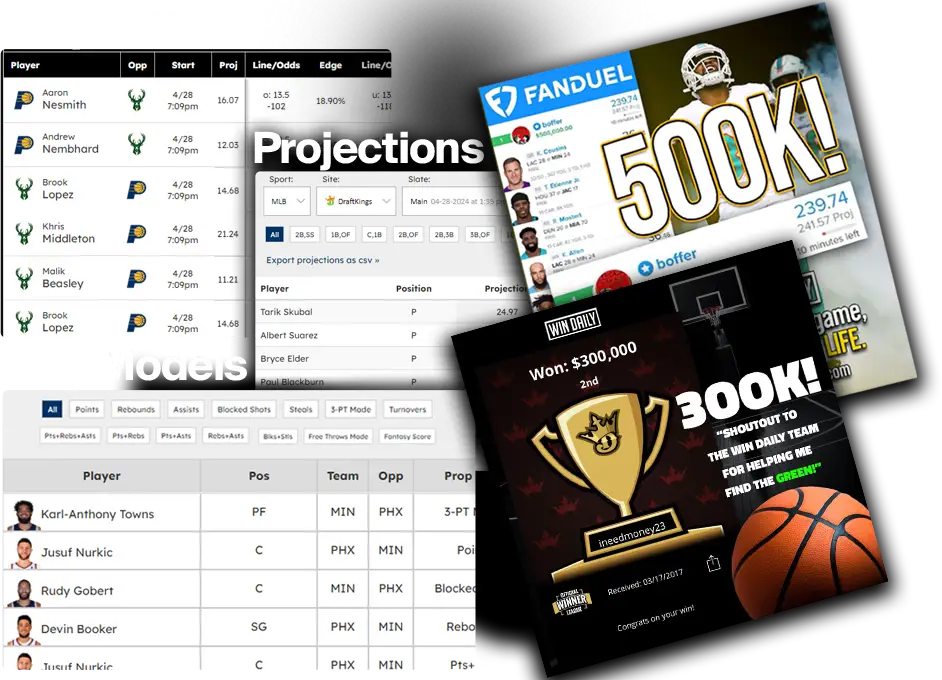Interested in asking Nick some questions about this article? Hit him up on Twitter @StixPicks and join our FREE Discord Chat to join the conversation with Nick and our other pros!
In MLB DFS there is not a more important position than the pitcher spot. You will not make a bigger decision each day than selecting who your pitcher(s) is going to be. If you want to cash, you better get the pitcher position correct. You can afford to take a zero from a hitter due to variance, but if you get the pitcher position wrong, you are toast.
We don’t want that to happen to you, so let’s take a look at the process of selecting which pitcher to anchor your MLB DFS entries.
It is All About the Matchup
Like most other DFS sports, winning consistently at MLB is about being able to take advantage of matchups. DFS is about more than just playing the best players in the league. It is about exploiting the matchups that are presented on a daily basis. What separates the best DFS players from the rest is knowing which stats help exploit these matchups.
While amateurs will reference stats like ERA and batting average, these stats aren’t very helpful. Statistics, like ERA, are a snapshot of what has happened in the past but have little success predicting the future. Our team here will instead look to use stats that are predictive in nature.
MLB DFS is littered with variance. Mike Trout, the best player in baseball, can have an 0-for-4 night. So when we have a stat that is actually predictive we have to start our research there.
Strikeouts, strikeouts, and more strikeouts
There is no more predictive stat in baseball than strikeouts. So we want to start our search for a MLB DFS pitcher by finding a hurler that can pile up the K’s. Especially considering that punch outs will score us a lot of points on the major DFS sites, like DraftKings, FanDuel, and Monkey Knife Fight.
Since strikeout rates are one of the more stable stats in MLB, this step to selecting a pitcher is pretty easy. You want to target a pitcher with a high strikeout rate facing an offense also with a high strikeout rate. A great resource to find these numbers is FanGraphs. Here we can find what a pitcher’s K% Rate is.

Clearly, the higher the number the better. But when looking for strikeouts we want to also take a look at the opponent as well as the starting pitcher. So again using FanGraphs, we can find the K Rate’s of offenses as well.

In an ideal situation, we would start a high K Rate pitcher against a high K Rate offense. But we can settle for an average K Rate pitcher against a high K Rate offense. The offense should give a boost to the pitcher assuming he can pitch deep into the game.
One note that is worth discussing in regards to strikeout rates is the time frame you want to reference those numbers from. From a statistical point of view a larger sample size generally allows for a more predictive probability. So in an ideal world we would use full season stats.
However we also must be cognoscente of the fact that things change. So we must keep an eye on things like K Rates on a smaller scale, whether that is month to month or even start to start. But when examining in the smaller sample, be sure that if you see a change in the K Rate that you don’t just assume that the pitcher all of a sudden is going to strikeout guys at a higher or lower rate than they are used to.
We must dive deeper in to the cause of the change. It might have been a coincidence. The pitcher may have just faced a lineup that sat some star players. But it also may be the fact that the pitcher is getting more horizontal movement on his slider, causing hitters to swing and miss at the pitch like never before. In a future piece we will take a look at how to find the causation on K Rate jumps in season, but for now we wanted you to be aware that is something to consider when looking at K Rate numbers for an entire season.
MLB DFS: SP Innings Pitched
Speaking of pitching deep into the game, another stat that we have to consider on a given day is the pitcher’s ability to accumulate innings pitched. Or another way to look at it is the ability to pitch deep(er) into the game. This is important for a number of reasons.
But the idea is simple: The longer they can pitch, the more MLB DFS points they can score. The major DFS sites reward your pitcher for outs recorded. But also the longer they pitch the more likely they are to put up more strikeouts and even pick up the win bonus points.
How can we predict how many innings our pitcher will go to? Well, we can start by looking at their recent body of work. It may seem barbaric but we can do some box score scouting here. We may see helpful trends. For example, by going to MLB‘s website we can see the Chicago Cubs’ Kyle Hendricks did not pitch more than six innings in a game in the month of September.

While this is a starting point, we certainly need to dig deeper into predicting how long our starter will pitch. One way to do this is by taking a look at the opponents’ offensive pitches seen metrics. Using Baseball-Reference, we can find teams that have below league average pitches seen per plate appearance. This potentially will help us find a spot where a starting pitcher will pitch deeper into a game than usual.

2019 Pitches Per Plate Appearance By Team Courtesy of Baseball-Reference.com
Another great place to look for a potential opportunity to see a pitcher go longer in a game than normal is their own bullpen. If a team’s pen is over-taxed, the manager may lean on the starter a bit more than normal. A great site to find this information is Baseball Press.

Here we can see how many pitches a member of a bullpen has pitched over the last five days. If you see a lot of numbers across lots of the days across a lot of pitchers, the pen is taxed. Look for that team’s starter on that day, to go a bit longer in the game than normal.
Analyzing the Pitch Arsenal
At this point in your research for a pitcher for your MLB DFS entries, you should be able to whittle your list down. So now it is time to really dig in and do a deep dive into the pitchers on your shortlist. Specifically, you are going to take a look at their pitch arsenal and the success the opposition has had on those types of pitches.
To do this deeper dive into pitch arsenal, we will be using Brooks Baseball. Here we can take a look at a pitcher’s usage per pitch.

What you find is not only do we get the opportunity to see what pitches a pitcher tosses but also how often. As well as what that pitch does in terms of velocity and movements. This information then allows us to see what success the opposition’s lineup has against these pitches, velocity, and movements.

This information should help us better predict the success a particular pitcher will have against a lineup based on his pitching arsenal. This information, along with the strikeout and outing depth data, should give you a clear picture of which pitcher to build your DFS lineups around.
MLB DFS: Viva Las Vegas!
The last pieces of information you will want to incorporate into your decision making is from Sin City. The most important thing to consider when using Vegas to determine your DFS pitcher is of course how big of a favorite he is. Not only does this help with the much needed win bonus, but also plays a hand in the innings pitched category that we emphasized earlier.
In addition to the favorite number, you will also want to take a look at the team totals. It would make sense to want to target a team that is expected to score fewer runs. This, of course, is a good thing for your pitching target. The less runs a team is expected to score the more likely your pitcher is going to pile up the strikeouts and innings pitched. You can find this information over with our friends from DraftKings and FanDuel!
Conclusion
As you can see, you want to take your time and really research the pitching position. It is without a doubt the most important decision you will make while building your MLB DFS lineups. Be sure to target pitchers that are favorites with a favorable matchup in regards to strikeouts, innings pitched and arsenal.
Interested in asking Nick some questions about this article? Hit him up on Twitter @StixPicks and join our FREE Discord Chat to join the conversation with Nick and our other pros!






